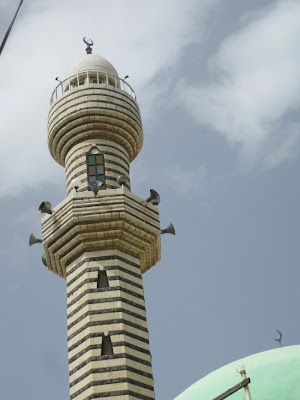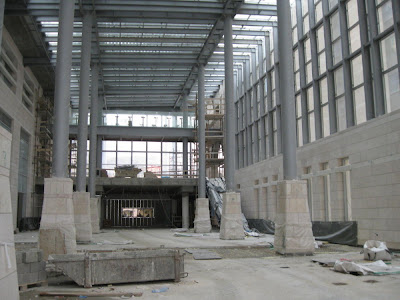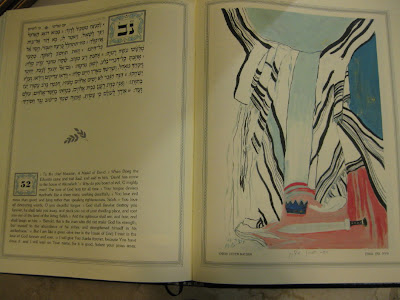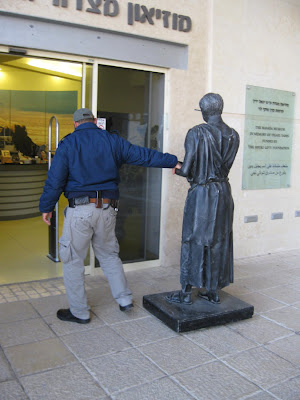.

This religious boy with the fluffy
peyot (side curls) took care of his little brother while his mother was inside praying; this was the first thing we saw when our tour group arrived at the site.

Tradition has it that
Ḥoni the Circle-Drawer is buried in this tomb, not far from the graves of two of his grandsons.
Today it is near the town of
Hatzor HaGlilit in the north of Israel.
.
The signs at the door directed men to the left and women to the right.

We reached a locked gate but the holes were just big enough to stick my lens through.
The camera captured the distant burial cave with its burning memorial candles.

Outside in the courtyard, a circle reminded us of the famous story.
See a cute animated video of Honi here.
Wikipedia explains it well:
"When
God did not send rain well into the winter ..., he [Honi] drew a circle in the dust, stood inside it, and informed God that he would not move until it rained. When it began to drizzle, Honi told God that he was not satisfied and expected more rain; it then began to pour. He explained that he wanted a calm rain, at which point the rain calmed to a normal rain.
He was almost put into cherem
(excommunication) for the above incident in which he showed "dishonor" to God. However,
Shimon ben Shetach, the brother of Queen Shlomtzion, excused him, saying that he was Honi and had a special relationship with God."

Wiki also explains that "During the 1st century BC, a variety of religious movements and splinter groups developed amongst the Jews in Judea. A number of individuals claimed to be miracle workers in the tradition of
Elijah and
Elisha, the ancient Jewish prophets. The Talmud provides some examples of such Jewish miracle workers, one of whom is Honi ha-Ma'agel, who was famous for his ability to successfully pray for rain."

Honi was a zadik, a righteous man.
But zadik is sometimes translated "saint."
Then you get into terms like patron saints, pilgrimage, veneration of saints, intercession, devotees, shrines . . .
Remember, we are talking about Jews now, not Catholics.
The book
Jews in Israel, contemporary social and cultural patterns talks of
a "renewal of saint worship" in this country in recent years, citing Honi and others as examples.
If you look at the tombs of the zadikim in the North and South, you see how a whole "holy industry" has grown up around each one.
And pilgrims come by the busloads.
.
This is not the Judaism I grew up with in America; it is new (and strange) to me.
.
.
(A post for
Taphophile Tragics,
Our World Tuesday, and
Monday Doorways.)
.
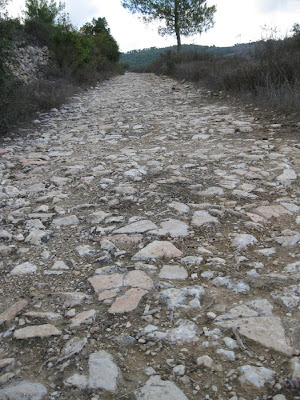 Instead I give you the Roman Road or Caesar's Way, an ancient way that passes near my village in the Jerusalem Hills.
Instead I give you the Roman Road or Caesar's Way, an ancient way that passes near my village in the Jerusalem Hills.




